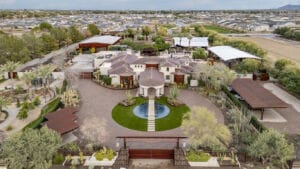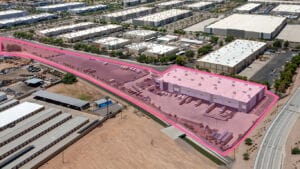
Naming apartment communities has always been an art form. Some community names connect to romantic or exotic locales, others to the landscape and still more simply to location.
“We believe that an apartment is more than just a place to have dinner and go to bed,” says Rob Lyles, partner in Deco Communities. “We see it as a place to live.”
Deco Communities recently opened its seventh Cabana apartment community. It markets to residents in transition from a college apartment on the road to a career.
The Cabana apartments — six in the Phoenix metro, one in Las Vegas — are all new from the walls out rather than from the ground up. With more than 8,000 multifamily entitlements for new units scattered throughout Phoenix, Scottsdale and the East Valley, Deco moves in a different direction.
“There are a lot of properties with good bones,” says partner Patricia A. Watts. “We find ‘C’ apartments in ‘A’ and ‘B’ locations. Our residents want to live in an urban setting and they want to be proud of their place.”

Deco Communities take distressed or declining properties and completely upgrades the interiors and then applies its unique palette to the landscape, exterior and amenities. The palette is literally color. No other multifamily owner has quite captured the unique colorscape of the Cabana apartment communities.
“People see the colors on the building and they know it’s a Cabana,” she explains. “We’re just using different shades, but completely transforms a building. Then we upgrade the pool area to make it a boutique hotel setting. It’s the same flavors at each of our communities.”
Ian Swiergol, Alliance Residential’s managing director for the Southwest Division, says branding is also an assurance of quality.
“There is no question that our residents select Broadstone communities because of the quality of the property. We use the brand to sell consistency in performance, amenities and management. People use the internet and social media in place of a ‘drive by’ when apartment-hunting,” he says. “Having the Broadstone name means we are able to manage expectations from the moment they see the website.”
Alliance closely guards its Broadstone brand. Each property is capitalized differently, and when one sells, the Broadstone name does not transfer to the new owner.

“We want to control the property management, professionalism and quality of resident and property,” Swiergol explains. “When we’re managing the community, we know our residents will not be disappointed.”
Cabana and Broadstone communities appeal to different markets. The branding ensures prospective tenants know what to expect.
“The recession changed the market for apartments in Arizona,” says Swiergol. “People lost homes, but still want the luxury of a place to live that feels like home. That’s what the Broadstone brand means.”
Part of the driving force behind the apartment boom — particularly luxury apartments — is that many found that the home investment became a financial burden. While they’re willing to pay more for rent, the expectations are that the apartment is going to offer a ‘home’ setting.
“Life cycles are changing,” he explains. “The boomer generation is walking away from home maintenance and ownership, but not lowering housing expectations. With the Broadstone name, there is an appeal to the discerning renter. They expect absolute luxury in and out of their apartment.”
Alliance is consistent with the Broadstone brand, and when a prospective resident looks at the name, a major portion of the selling opportunity is out of the way. The potential renter comes to the property with a positive impression before walking into the leasing office. Location plays an important role in the branded communities.
“Millennials are returning to the urban cores,” adds Dan Richards, the third partner in Deco Communities. “They don’t want a long commute; they’re already spending long hours at work. We look at proximity to employment and transportation.”

Swiergol lists those two market characteristics as important for its new Broadstone locations. “We want to be at Main and Main,” he says. “That’s why we’re building on the Scottsdale Waterfront and downtown. Same thing with our new Phoenix locations. There are 80 thousand jobs downtown.”
Lyles and Swiergol talk about the move of large prime employers seeking downtown locations. Employees don’t want to be sitting in cars. The success of Valley Metro Light Rail and increased bus ridership in employment corridors back up the investment in the core areas.
“We see our residents come home and come out,” says Watts.
Branding a series of apartment communities doesn’t cost any more than any other remodeling effort. “It just takes more thought,” Watts adds. “We looked at what market needed for places to live and what those renters wanted from their home. Our brand includes graffiti art, bike rooms and models using Ikea furniture. Being cool doesn’t have to cost a lot. You say you’re living at ‘Cabana’ and a person knows what they are going to see when they get to your place.”
The Broadstone brand has another appeal beyond the community. It’s a name recognized by major institutional investors. Alliance Residential partners with Trammell Crow with their ground-up Broadstone communities. In a market looking for capital, the Broadstone name brings a high level of investment confidence.
In the highly competitive market – both for tenants and for capital – the branding of apartment communities places the project at a higher success level than just an apartment community going up on its own. Branding means expectations, promise and high occupancy rates.



